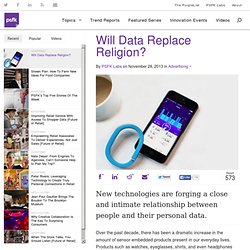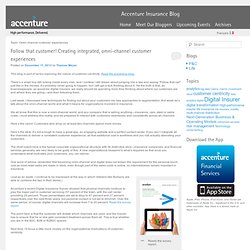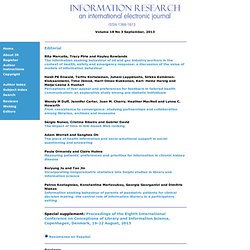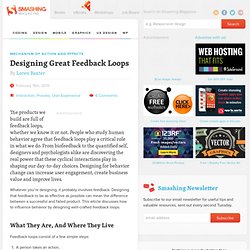

Will Data Replace Religion? I remember returning from a trend trip to the United Kingdom in the early 1990′s and flagging the emergence of the organic food movement hitting mainstream grocery stores.

Admittedly, England wasn’t known for its food back then, but the likes of Duchy Originals, Pret A Manger, Waitrose and Marks & Spencer were leading the charge for more nutritious consumer options. Fast-forward to the present day, and America is finally catching on to the importance of product ingredients and origins. There is no doubt that we are witnessing the beginning of a dynamic food revolution in the United States. Major food companies are turning to artisanal and organic startups for inspiration, and retail grocers are being forced to change the way they think.
With Whole Foods and Sprouts continuing their expansion, WalMart and Target embracing new formats, and Amazon Fresh entering the scene, service and innovation are likely to accelerate. Meet a radical new style of farmer A radically new style of farm. Journal of Information Architecture. Editorial : The System of Information Architecture. If a factory is torn down but the rationality which produced it is left standing, then that rationality will simply produce another factory.

If a revolution destroys a government, but the systematic patterns of thought that produced that government are left intact, then those patterns will repeat themselves ... There’s so much talk about the system. And so little understanding. Robert Pirsig, Zen and the Art of Motorcycle Maintenance, 1974 Systems Thinking Recently, while writing an article about being an information architect, I found myself reading the Wikipedia entry on “systems thinking” where I discovered John Gall and his 1975 book General Systemantics which I promptly borrowed from my public library (via inter-library loan).
Omni-channel customer experiences. This blog is part of series exploring the nature of customer-centricity.

Read the preceding blog. There’s a small boy still lurking inside every man, and I confess I still dream about jumping into a taxi and saying “Follow that car!” 12 Old Words that Survived by Getting Fossilized in Idioms. English has changed a lot in the last several hundred years, and there are many words once used that we would no longer recognize today.

For whatever reason, we started pronouncing them differently, or stopped using them entirely, and they became obsolete. There are some old words, however, that are nearly obsolete, but we still recognize because they were lucky enough to get stuck in set phrases that have lasted across the centuries. Here are 12 lucky words that survived by getting fossilized in idioms. The Information Architecture Institute. The Noun Project. Information Research - Contents - Vol. 18 No. 3. Editorial Rita Marcella, Tracy Pirie and Hayley Rowlands The information seeking behaviour of oil and gas industry workers in the context of health, safety and emergency response: a discussion of the value of models of information behaviour Heidi PK Enwald, Terttu Kortelainen, Juhani Leppäluoto, Sirkka Keinänen-Kiukaanniemi, Timo Jämsä, Harri Oinas-Kukkonen, Karl- Heinz Herzig and Maija-Leena A Huotari Perceptions of fear appeal and preferences for feedback in tailored health communication: an explorative study among pre-diabetic individuals.

Alfresco ECM. Mechanism Of Action And Effects — Designing Great Feedback Loops. Advertisement The products we build are full of feedback loops, whether we know it or not.

People who study human behavior agree that feedback loops play a critical role in what we do. From biofeedback to the quantified self, designers and psychologists alike are discovering the real power that these cyclical interactions play in shaping our day-to-day choices. Designing for behavior change can increase user engagement, create business value and improve lives. Whatever you’re designing, it probably involves feedback.
Conversion Rate Optimization. Pervasive Information Architecture - Designing Cross-Channel User Experiences. 5. Design Principles for Wayfinding. Next: 6.

Design Principles for Up: Designing Navigable Information Spaces Previous: 4. Design Principles for Subsections This set of design principles is concerned making information spaces effectively navigable. Navigability means that the navigator can successfully move in the information space from his present location to a destination, even if the location of the destination is imprecisely known. CEMMethod® Google Maps Has Been Tracking Your Every Move, And There’s A Website To Prove ItREALfarmacy.com. Content From The Web:Content From The Web:Content From The Web:Content From The Web:Content From The Web: Close This content has been recommended to you by Yavli.

Both Yavli and the website displaying the recommendations may receive compensation as a result of the content being clicked. View our Privacy Policy. Remember that scene in Minority Report, where Tom Cruise is on the run from the law, but is unable to avoid detection because everywhere he goes there are constant retina scans feeding his location back to a central database?
From the Physical to the Emotional: User Experience Design at Semantico. In my previous posts on our User Experience (UX) methodology I touched on sketching, wireframing and prototyping.

It would be remiss of me not to discuss the most important factor in any user-centric design approach: user research. Since the emergence of Participatory Design in the 60s and 70s, design thinking has moved on from the physical to encompass the emotional and behavioural. Designers today create a context for experience (Hummels, Djajadiningrat and Overbeeke, 2001) and UX is an expertise that provides a user-centric and data-driven approach, needed when designing appropriate and effective products in today’s digitally fragmented world. UX is not a new speciality: rather it is an umbrella term for processes and methodologies that had their genesis in other fields, but which all have one important thing in common.
Ignore users at your peril Here at Semantico our clients often have a complex user ecology. We have to understand this complexity of our user base. Keeping it real.